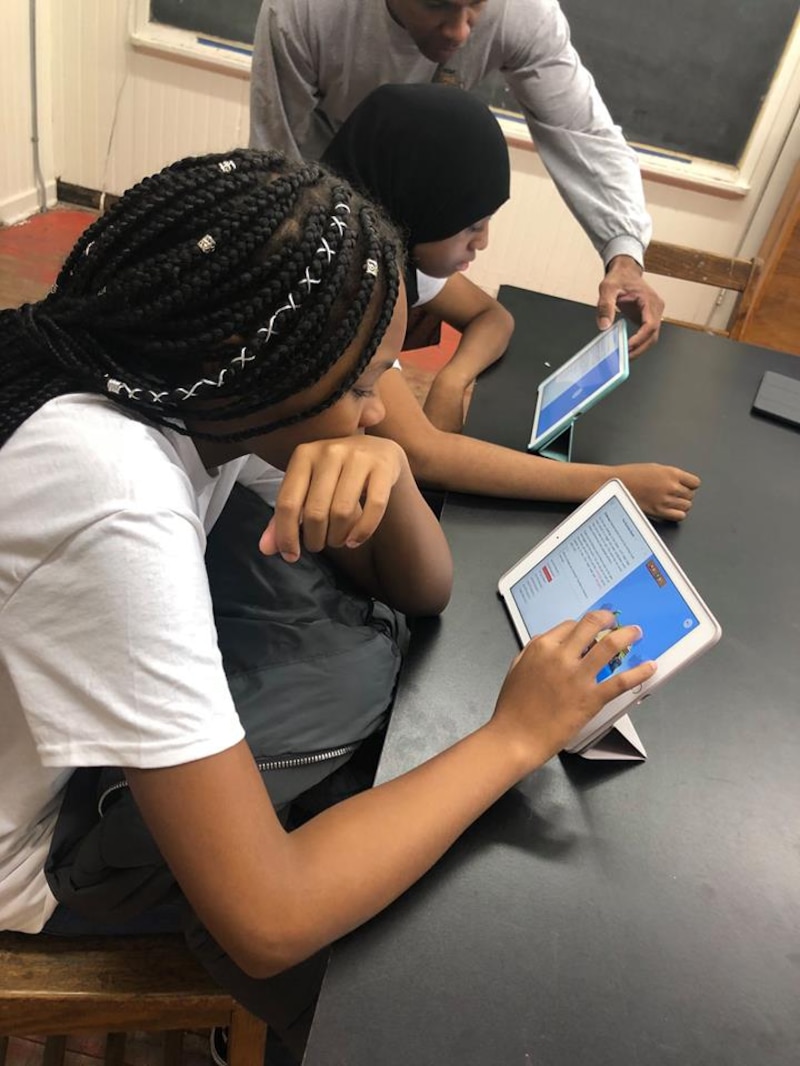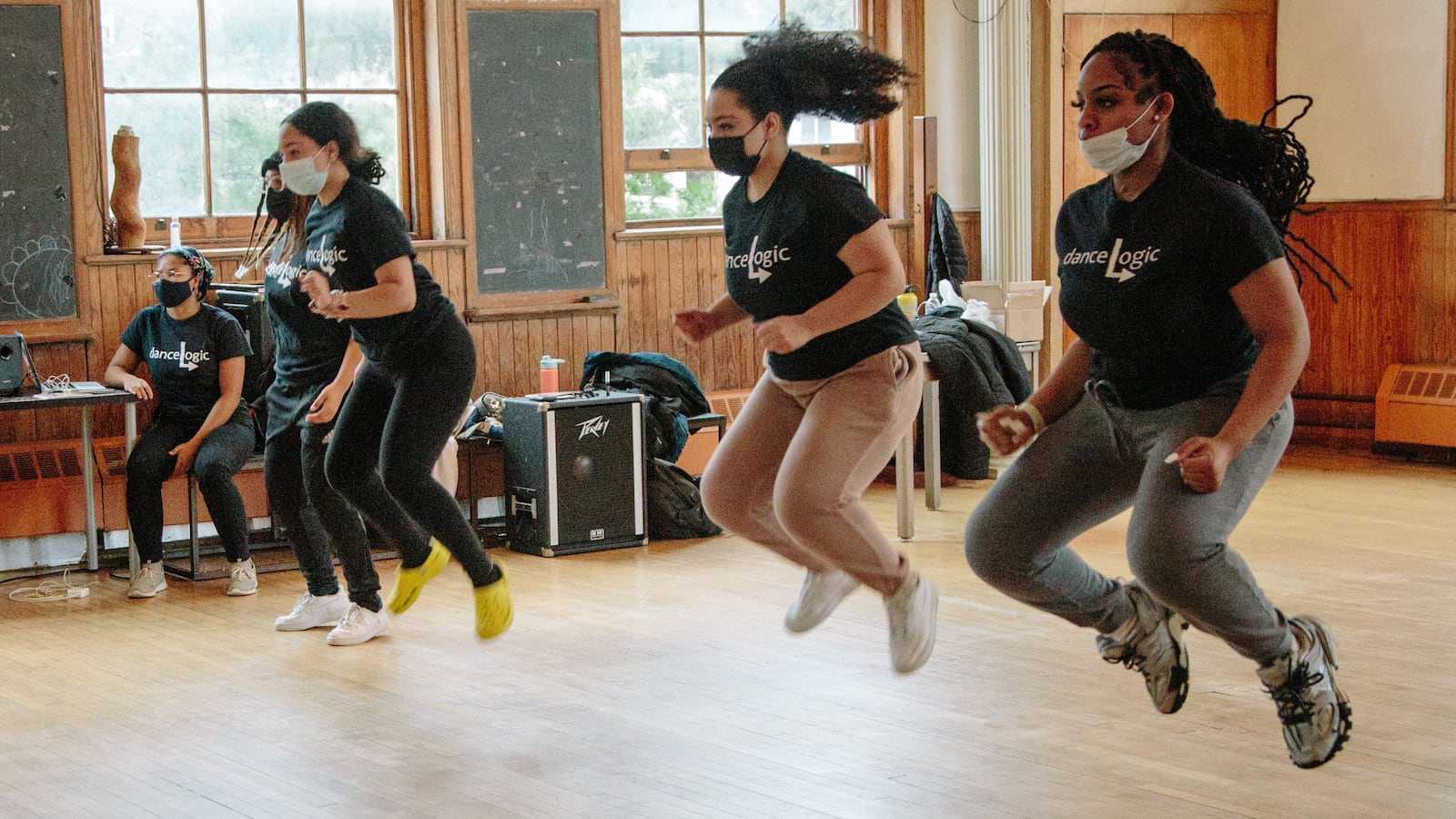Women and people of color are under-represented in science, technology, engineering, and math. But there’s an effort afoot in Philadelphia to change that through an unusual mix of dance and coding lessons.
DanceLogic, which is run by the West Park Cultural Center, is “designed to educate, inspire, and cultivate girls of color in STEM,” said Betty Lindley, the founder and executive director. Lindley started the program in 2018, teaming up with Franklyn Athias, a Comcast engineer, to offer basic coding lessons along with dance on Saturdays.
The premise: Both coding and dance use repetition and combination, so using dance as a hook to attract girls to the program could lead to an interest in coding. Proponents say programs like danceLogic and others around the country are win-win, motivating kids to enter promising fields, while also diversifying and adding to the STEM workforce pipeline. And programs that get kids interested in STEM when they are relatively young can be especially successful.
Dance, Lindley said, is “a hook” to open girls’ minds to exploring something new. “There are not that many females in technology, especially coding,” she said. “There are career opportunities that girls just aren’t aware of or don’t even think about exploring.”
Recent research bears out Lindley’s point. A 2021 National Science Foundation report found that women made up just 34% of the workforce in the four professional fields collectively known as STEM. Meanwhile, Blacks, Hispanics, and Native Americans collectively accounted for just 23%.
Those low percentages persist “because we’ve allowed them to persist,” said Dia Jones, executive director of the STEM Educational Institute, a nonprofit group that provides technology programs for high school students in under-represented areas.
Programs like danceLogic, Black Girls Do STEM, and the Ujima GIRL program at the University of California-Davis are a way of making inroads by reaching girls of color before they get to high school, she said.
DanceLogic students range from 12 to 18 years old. Most girls in the program participate at no cost, Lindley said. The program is funded through grants and individual donations.
Each Saturday, the girls participate in dance class from noon to 1:20 p.m., take a short break, and then go into coding class until 2:30 p.m. Sessions run from October through June, culminating with a performance at the annual West Park Arts Fest.
“Much of our dance class is centered around composition and choreography,” both of which use languages and techniques to build narratives and projects, said Cameron Bridgers, a danceLogic dance instructor who applied to teach at the program after receiving her dance degree from Temple University.

For example, she said, the class developed a dance score using coding language to note choreography. “In the future, I hope to expand on this with the girls and see how it progresses with their understanding of both worlds,” she said.
Bridgers said that initially, she wasn’t sure what the connection was between dance and computer programming. She soon found that both are “methods of creation,” she said.
Many educators are designing STEM-focused programs for middle schoolers and younger children who might not otherwise think they can succeed in these technical fields. Reaching those students when they’re in the early grades is often crucial, and can help counter issues like a shortage of Black and brown teachers and other systemic factors.
“If you can get them early enough, when they’re talking about, ‘I want to work for NASA, I want to be an engineer or a gamer or a doctor’ — if you get them early enough, you can say, ‘You can do this,’” said Jones, who has worked with Philadelphia schools for many years. “If you have that representation, that interest, that support early, students are more likely to continue with their STEM journeys,” she said.
Helping others is also a theme at danceLogic.
Students have shown an eagerness to take charge of the choreography and exchange ideas about what the dances should be. Bridgers said she’s seen many of the girls who participate develop into strong leaders and mentors. “We make a space for these young women to expand their agency and autonomy in the field of STEM,” she said.
One danceLogic student even developed her own coding curriculum and taught younger children in her neighborhood library, said Lindley. DanceLogic also hired the student when the pandemic forced a switch to virtual learning, charging her with designing and implementing a virtual video-game design class for children, Lindley said.
One other benefit: The girls in danceLogic say the program has helped them with their math studies, Lindley said.
‘I honestly didn’t know what STEM was’
The University of Maryland, Baltimore’s CURE Scholars is another program that aims to fill and diversify the STEM pipeline by reaching out to under-represented students early in their educational journeys.
CURE pairs middle-school students from West Baltimore with mentors, guiding them year-round through high school with tutoring, hands-on activities, and opportunities to see researchers in action. The first cohort of scholars started in 2015 and graduated high school this spring. They’re headed for colleges that include prominent HBCUs such as Howard University and Spelman College.
Ayishat Yussuf is one of them. In the fall she’ll attend Spelman, where she plans to major in biology with the goal of becoming a pediatrician and health advocate.
When she applied to the program in 5th grade, “I honestly didn’t know what STEM was,” she told Chalkbeat. “I had the feeling it was health-related, but I wasn’t aware of all it consists of.”
Yussuf said giving back to the community is important to her, as she appreciates all the CURE program gave her. The program, she said, inspired her to make sure her career aspirations will make a positive impact, she said. “Coming from West Baltimore, there aren’t that many opportunities,” she said.
Jones’ group, the STEM Educational Institute, is a one-week summer program for 9th to 12th graders aimed at helping them prepare for STEM majors in college and careers in STEM fields. In addition to creating a diverse talent pipeline, the program is focused on how students can build generational wealth, she said.
Students learn from professionals “who look like them” about the mechanics of coding, but also broader life lessons, such as how to survive college, she said.
“I was raised to reach back” and help others,” Jones said. “There are things someone helped me with, so I’m absolutely going to help others and give [them] the opportunities I had — and a lot of opportunities I didn’t have,” she said.

